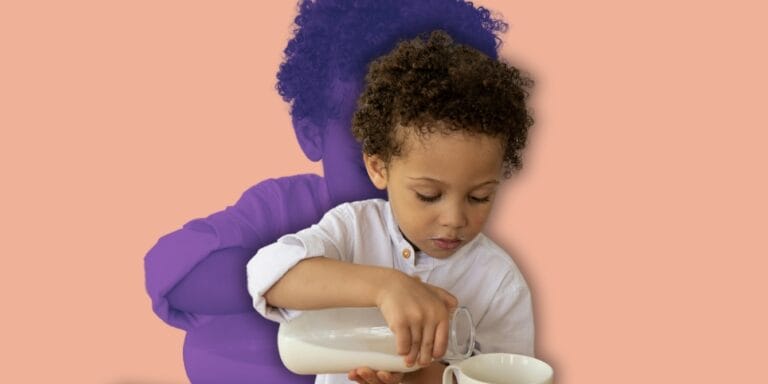WHO releases new guidelines: Children under 5 shouldn’t have to wear masks

But those over 12 should.
If your preschooler doesn’t like wearing a mask we’ve got some news for you. While masks can be beneficial for some kids, they aren’t for every kid, as the WHO notes in new guidance this month.
The World Health Organization and UNICEF wrote in new joint guidance that children under 5 shouldn’t be required to wear masks unless there’s an adult nearby who can make sure they’re wearing it properly the entire time.
“This advice is based on the safety and overall interest of the child and the capacity to appropriately use a mask with minimal assistance,” the WHO wrote.
The organization noted that there’s limited COVID-specific evidence to support the age cut off of 5 years old, but that a group of experts chose it based on average child development: By this age, kids usually have more of the dexterity and motor coordination required to properly wear a mask.
“In some countries, guidance and policies recommend a different and lower age cut-off for mask use,” WHO and UNICEF wrote. The United States is one of those countries. The Centers for Disease Control and Prevention’s guidance, which was updated in August, states that children over 2 years old should wear face coverings whenever possible.
All of this contradicting advice can be confusing so here’s what parents need to know about the new WHO guidelines:
In countries like the United States, or if a child is going to be physically close to someone who is ill, WHO recommends “a parent or other guardian should be within direct line of sight to supervise the safe use of the mask.”
The WHO and UNICEF guidance also addresses children 6-11 years old, who should wear masks based various risk factors like:
- “Intensity of transmission in the area where the child is and updated data/available evidence on the risk of infection and transmission in this age group;”
- “Social and cultural environment such as beliefs, customs, behavior or social norms that influence the community and population’s social interactions, especially with and among children;”
- “The child’s capacity to comply with the appropriate use of masks and availability of appropriate adult supervision;”
- “Potential impact of mask wearing on learning and psychosocial development; and”
- “Additional specific considerations and adaptions [sic] for specific settings such as households with elderly relatives, schools, during sport activities or for children with disabilities or with underlying diseases.”
For children who are 12 and older, parents should follow the local or national mask guidance for adults. The groups also recommend that parents, teachers and community members use age-appropriate communication and education to help kids understand when mask-wearing is necessary and how to do it properly.
In some situations, like at school, WHO and UNICEF said adults should adapt the age cut-off for wearing a mask to “to avoid stigmatizing and alienating children in mixed-aged groups.” For example, they note that in situations “where older children for whom masks are advised are in the same class as younger children who fall below the age cut-off for wearing masks, the older learners might be exempt from wearing masks.”
Medical experts in the United States have had trouble implementing successful guidance regarding masks, in part because of confusion at the start of the pandemic about the efficacy of wearing masks. But the CDC has maintained that they are critically important, writing in July that there’s “increasing evidence that cloth face coverings help prevent people who have COVID-19 from spreading the virus to others,” according to The Verge.
As students head back to school, medical professionals are calling for school administrators to require masks, particularly at high schools and colleges, but some schools have pushed back, The Washington Post reported.
The back and forth of the mask debate is concerning to experts, especially given that there were more than 75,000 new cases of the coronavirus in children between July 30 and August 13—a 24% increase, The Verge reported.
The WHO and UNICEF’s new guidance will hopefully give parents additional clarity about when and how to help their kids wear masks safely and effectively.


































